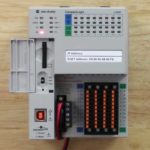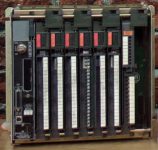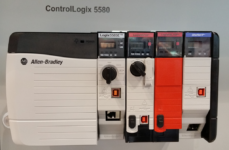
Most major automation vendors have a Programmable Automation Controller (PAC) line, and today I’ll attempt to add some clarity as to what a PAC is, and how it differs from the classic PLC.
What is a “Programmable Automation Controller?”
 Most people you meet in the automation industry are very comfortable describing what a Programmable Logic Control, or PLC, is.
Most people you meet in the automation industry are very comfortable describing what a Programmable Logic Control, or PLC, is.
However, many have difficulty distinguishing between the capabilities of a Programmable Logic Control, and the newer Programmable Automation Controller.
In fact, I’ve often been guilty myself of referring to PACs generically as PLCs just to avoid confusing a client, and even worse having to interrupt a presentation to attempt to describe the somewhat intangible difference between the two.
A Gradual Evolution
 Much of the confusion behind the difference between the capabilities of PLCs versus PACs is a direct result of the evolution from PLC to PAC being a gradual one.
Much of the confusion behind the difference between the capabilities of PLCs versus PACs is a direct result of the evolution from PLC to PAC being a gradual one.
For example, the attributes you’d most often find vendors using to describe their PACs today, like the ability to control large quantities of distributed I/O, or being capable of controlling process and batching systems, have previously been achieved with higher end PLCs like the Allen-Bradley PLC-5.
That said, there are certain features that most current generation PACs have which many legacy PLCs do not.
These include built-in support for most (if not all) IEC-61131-3 languages, as well as enhanced instruction sets to address motion, batch, and process control applications.
 In contrast, most first generation PLCs produced in the early 1970s programmed exclusively in Ladder Logic, with limited instruction sets designed primarily to address discrete applications.
In contrast, most first generation PLCs produced in the early 1970s programmed exclusively in Ladder Logic, with limited instruction sets designed primarily to address discrete applications.
Most PACs also support a user generated tag database, as opposed to legacy PLCs which had rigidly named data and register files.
My PAC Definition
In conclusion, I believe the best way to describe a Programmable Automation Controller would be to first acknowledge that like a Programmable Logic Controller, it has the capability of automating discrete processes through the use of Ladder Logic.
 That said, most PACs also include much more extensive support of the IEC 61131 standard, including being based on a muti-tasking architecture supporting multiple programming language, as well as a user definable tag database with wide ranging data type support.
That said, most PACs also include much more extensive support of the IEC 61131 standard, including being based on a muti-tasking architecture supporting multiple programming language, as well as a user definable tag database with wide ranging data type support.
And most PACs also include extensive instruction sets to accommodate controlling a wide range of automation applications including discrete, motion, batch, and process.
Well, that’s my thoughts on what a PAC is.
If you think I left anything out, or have a different take, please feel free to leave you comments below uisng the “post a comment or question” form.
And if you’d like to learn more about PACs, check out my free PAC Getting Started course at TheAutomationSchool.com
Until next time, Peace ✌️
If you enjoyed this content, please give it a Like, and consider Sharing a link to it as that is the best way for us to grow our audience, which in turn allows us to produce more content 🙂
Shawn M Tierney
Technology Enthusiast & Content Creator
Support our work and gain access to hundreds members only articles and videos by becoming a member at The Automation Blog or on YouTube. You’ll also find all of my affordable PLC, HMI, and SCADA courses at TheAutomationSchool.com.
- FactoryTalk Design Workbench First Look, CCW Comparison - December 19, 2025
- Drew Allen of Grace Technologies on Automation, Safety, and More (P256) - December 17, 2025
- Robotics in Warehouse Automation with Erik Nieves of Plus One Robotics (P255) - December 10, 2025

Discover more from The Automation Blog
Subscribe to get the latest posts sent to your email.




Thanks, Shawn!
Now my understanding is clearer.
I sure miss those old PLC-5’s…….
Good morning Sammy,
I’m a big PLC-5 fan, but it got old explaining how to address RIO or use BTs lol.
Shawn
Don’t forget DH+ and fussing with serial cables and the array of dongles needed to adapt one thing to another and messing around with speed settings/parity/etc.
I hear you Jeff!
I won’t even start talking about “interchange!”
That said, I do own a couple of used PLC-5’s and I’m very fond of them,
I just need to find someone willing to donate a copy of RSLogix 5 to TheAutomationBlog so I can work up some how-to articles on them?
Sincerely,
Shawn Tierney
[sc name="stsigcom"]
So would you classify SLC-500s as PLCs, but ControlLogix, and CompactLogix as PACs?
Good morning Cevin,
Rockwell does classify the SLC-500, MicroLogix, and PLC-5 as PLCs, and CompactLogix and ControlLogix as PACs.
Sincerely,
Shawn Tierney
[sc name="stsigcom"]